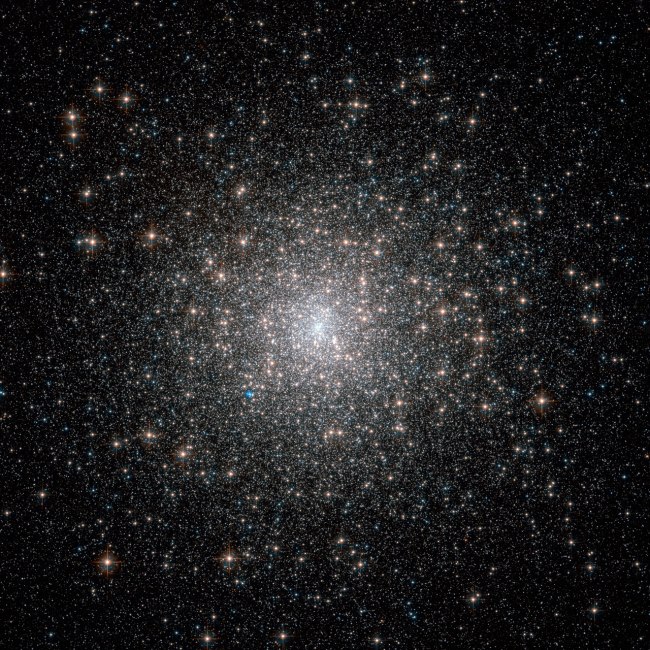Terry Hurlbut Advocating Walter Brown’s Hydroplate Nonsense
In my Part 1 of this lengthy series of probably 11 posts, I talked about the machinations of Terry Hurlbut, one of the primary editors of Conservapedia and (I think) the founder of the incredibly ad-rich Conservative News and Views website that espouses über-right wing ideals and young-Earth creationism. He said that Pluto is red therefore it’s rusty therefore it formed from material ejected from Earth during Noah’s Flood.
In a follow-up post, Terry followed the same protocol as before, grabbing onto one tiny finding, saying it’s impossible to explain with modern science, therefore Pluto was launched from Earth during the Flood.
In this case, the finding was carbon monoxide (CO) ice, found in the “heart” area now informally known as Tombaugh Regio. Terry explains this by saying that during the Flood, Pluto and Charon formed by material ejected from Earth, which heated as they contracted, burning the plant matter that was also ejected. The gases released from the burning plants included CO, which fell as “rain” onto the surface of Pluto in what he claims is a basin that is now Tombaugh Regio.
Okay, I know I try to avoid ad hominem attacks on this blog, but I had to fight my brain to type that last paragraph. It’s so ridiculous, that unless one actually is familiar with Terry’s writings on his own sites and elsewhere, one would think it’s a really bad Poe or Onion article.
Terry tries to emphasize in his article that neither NASA, SwRI, nor JHU/APL (the three institutions involved in the mission) have tried to explain the CO ice. Therefore, we don’t know now and therefore Terry’s idea is the only one out there.
The thing is, we don’t have all the data taken yet. The data we do have is lossy-compressed. And scientists by their nature are very cautious about publishing hypotheses about something without doing a lot of tests of those hypotheses. AND within the mission itself, there’s the situation that it’s better to put out obvious findings now and save the possible interpretations later once we have more time to look at the better data and talk with more people and amongst ourselves.
Put in that context, it’s perfectly reasonable to expect that NASA would put out the press release about unambiguous findings of concentrations in one area of Pluto of CO (as in we found it, it’s in ice form, and it’s concentrated in one particular area) and have that be the press release, rather than add unnecessarily to it several possible models to explain it but “more data are needed, stay tuned several months until we get that data to test it.” That’s kinda a downer to close out a press release.
Institute for Creation Research Advocating Pluto’s a Comet
In a perhaps more mainstream young-Earth creationist venue, the Institute for Creation Research also has a take on the New Horizons mission. Jake Hebert wrote their article, “New Horizons, Pluto, and the Age of the Solar System.” It is a fascinating read if one looks at it from the standpoint of starting with one topic and twisting it into something completely different to argue against in a no less wrong way than most other creationist writings.
Here’s the train of thought:
- New Horizons went to Pluto.
- Secular scientists are going to tell a materialistic story without a deity about it but aren’t saying that so’s to avoid offending the taxpayer.
- That means we don’t understand how the solar system formed.
- New Horizons will yield information about Kuiper Belt Objects.
- These are comets.
- Insert everything that creationists have written about comets over the years that they think shows comets prove the universe (or at least the solar system) is less than 6000 years old.
Not only is it a strawman argument on their part, but by equating Pluto with comets means not only that everything THEY have written about comets over the years applies, but also everything that scientists – such as myself – have also written that thoroughly debunks their arguments applies.
For a taste of these, I refer you to my blog (post 1, post 2, or post 3) and/or my podcast (episode 3). Rehashing all those ideas here is gratuitous and a waste of space. And, there’s a reason why those are some of my earliest blog post and earliest podcast episode: They’re simple to debunk.
Answers in Genesis Telling You Half-, Leading Truths
Finally, another of the Big Three creationist institutions is Ken Ham’s Answers in Genesis. Danny Faulkner wrote their article on New Horizons, “Pluto’s Surface Is Young!”
Sigh.
Here is the first argument that Danny is making: Pluto has relatively few craters, therefore it must be young:
[S]cientists have found far fewer craters than they expected. […] Being far from the sun, Pluto ought to be very cold and hence not have experienced recent volcanism. Any primordial heat would have long ago dissipated, if the solar system were 4.5 billion years old. [… T]here ought not to be any significant geological activity sufficient to remove craters on Pluto’s surface. Compounding this problem for a 4.5-billion-year age for the solar system is the fact that Pluto is located in a particularly crowded part of the solar system. […] Therefore, Pluto ought to be undergoing impacts today at a higher rate than most other objects in other portions of the solar system. Planetary scientists who are committed to belief in a 4.5-billion-year-old solar system are at a complete loss to explain the lack of craters on Pluto.
Part of this is exactly the same argument (at least in part) that I debunked here, in my post about Venus, several years ago: “Venus and the Battle of Uniformitarianism (A Creationist Argument).”
First, Pluto does not have ZERO craters. It has many; it’s just Tombaugh Regio that has no unambiguous craters in the region that we’ve seen with the lossy JPG artifacting covering it. That means it likely has no craters >10 km in diameter, meaning it could still have plenty that are smaller.
Second, the whole way we get our crater chronology starts from the moon (which Danny acknowledges, and he actually gives a reasonable overview of the subject). We do see heavily cratered areas of Pluto. So if we see some areas that have a huge number of craters relative to other areas, it just means that the one with few craters (or maybe none) is much younger. How much younger, though? If Danny wants to say that the heavily cratered areas are 6000 years old, does that mean that the “heart” region of Pluto was created yesterday? Again — see the Venus blog post.
To bypass some more of the quote and get to the last statement, this is common among creationists: God of the Gaps. Set up a scenario and say someone can’t explain something and then say GodDidIt. Except, we have plenty of ideas of why there may be no craters over some parts. One of the main ones has to do with the second argument (in three paragraphs): The atmosphere. It’s tiny, but it cycles. Pluto is tilted almost like Uranus, except more. So for 124 years we have one pole facing the sun, and for 124 years the other. During this time, it’s likely that the ices on the surface near the sunward pole sublimate (turn from solid to gas) and some get deposited on the pole that’s in night. This gives you a “surface” that is literally no more than a hundred years old.
In fact, going into this, I was warned that several models predicted that there may be very few craters on Pluto simply because of this process, of not only ices being deposited as many, many layers of frost, but also because when they sublimate, they are removing that surface that had been cratered! So some predictions going in were that Pluto may have a few very large, shallow craters, but nothing else. Obviously that’s not the case, Pluto is more interesting, but to say that we “are at a complete loss to explain the lack [not!] of craters on Pluto” is bullocks.
Here is the second argument that Danny made: Pluto is outgassing nitrogen, and therefore it’s young because it is a body of finite size and because there should be some activity that releases the nitrogen.
Yes, Pluto was found to be outgassing molecular nitrogen gas. Though “outgassing” is the wrong word here — perhaps an honest mistake, but it’s wrong nonetheless. It’s that nitrogen gas is escaping from the surface, not being outgassed from below the surface (that we know of). So this is a classic creationist argument: Take the current rate for something, multiply it by 4.5 billion years, and claim it’s impossible. They do that with Earth’s moon. But in this case, Danny didn’t even do that simple math, even if it is wrong (the current rate may not be what it was in the past). 500 tons per hour means very roughly 2*1019 kg over 4.5 billion years. Pluto is 1.3*1022 kg. That means it would have lost a mere 0.15% of its mass due to nitrogen escaping over 4.5 billion years if the current rate has been the rate for 4.5 billion years.
Not a problem.
The third argument has to do with the very tall, 3.3 km high mountains observed on Pluto, where Danny argues that if Pluto is warm enough to have geologic activity to account for those first two things, it can’t be cold enough to support ice mountains.
The mountains are interesting. I don’t even remember if there are solid ideas yet in the team as to how they may have formed, but this is yet another example where scientists look for something to explain an observation, and creationists leap to GodDidIt. Regardless, though, both of the prior two arguments can be explained at least in part by atmospheric processes rather than geologic, therefore this is moot.
Finally, he argues that Charon has fewer craters than expected, and a large chasm, therefore it’s young, too.
Problem if we take this approach: How can Charon be older than Pluto? If we’re using the metric of craters (and incorrectly per the standard young-Earth creationist), and Charon has more than Pluto, then Pluto is even younger than 6000 years old, right? What is he trying to say here, that Pluto formed a few minutes before Clyde Tombaugh discovered it?
I’m also not quite sure where he’s getting that Charon has fewer craters than expected. I don’t remember this being discussed, but it’s possible I missed it. A lot of the issue for Charon (and Pluto, for that matter) is our ability to identify craters in these images. Most imaging is with the sun almost directly overhead. Meaning we can’t pick out craters very easily. Especially when all we have is lossy, JPG-compressed images. Think of photographing the full moon of Earth and then compressing it to 100 kb to send to your grandmother who’s running Windows 95 with a 56k modem. Not easy.
Charon probably has more craters than Pluto (no atmosphere). But our ability to find them right now is significantly hindered. That in mind, I’ve already identified a few hundred. Same on Pluto.




